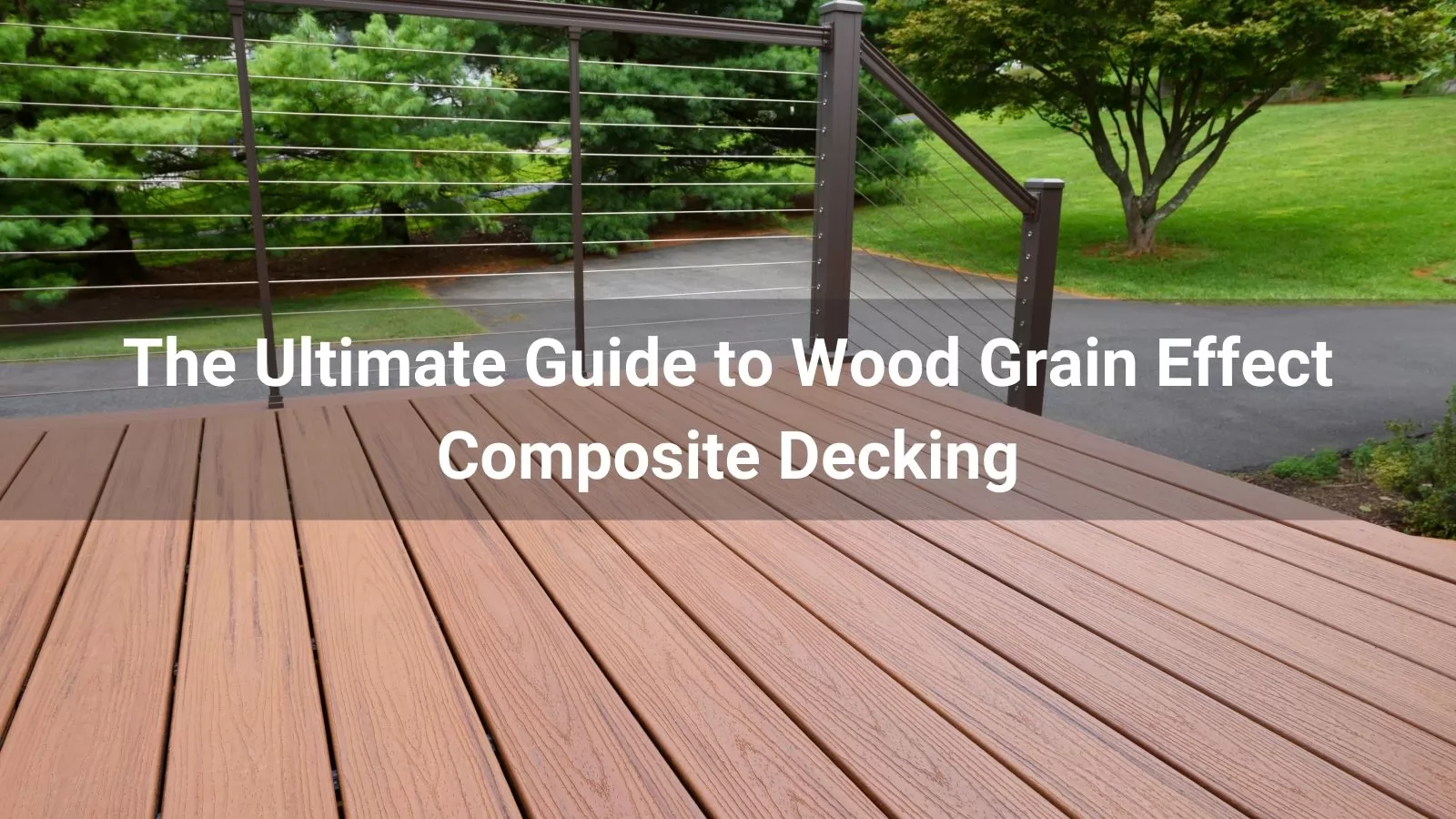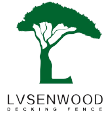

Composite decking has revolutionized outdoor living spaces by offering a durable, low-maintenance alternative to traditional timber. Among its most sought-after features is the wood grain effect, which mimics the natural beauty of wood while providing the practical benefits of composite materials. This guide explores the types of wood grain effects available, their characteristics, benefits, and how they enhance the aesthetic and functionality of composite decking.
Table of content
Wood grain effect composite decking refers to decking boards designed with surface textures and patterns that replicate the look and feel of natural wood. Unlike traditional timber, these boards are made from a blend of recycled wood fibers, plastics (such as polyethylene or PVC), and additives, ensuring durability, resistance to weathering, and minimal maintenance. The wood grain effect is achieved through advanced manufacturing techniques like embossing, co-extrusion, or printing, creating authentic-looking finishes that rival real wood.

source:High-quality Co-Extrusion Solid WPC Decking - LvsenWood
Composite decking manufacturers offer a variety of wood grain effects to suit different aesthetic preferences and functional needs. Below are the most common types, along with their characteristics and ideal applications:
Embossed 3D wood grain is created by physically pressing or etching a textured pattern into the board’s surface during manufacturing. This process results in a three-dimensional finish that closely mimics the knots, grains, and natural imperfections of real timber, offering a tactile, wood-like surface that enhances both appearance and functionality.
Characteristics and Applications
This effect features deep, multi-tonal patterns that replicate the depth of natural wood, paired with matte or low-gloss finishes for authenticity. The textured surface also provides enhanced slip resistance, making it a safe choice for various environments. Examples include NeoTimber Essential and Classic Ranges, which offer a deep, embossed finish with consistent knot and grain patterns for a traditional timber look, and Trex Transcend Lineage, featuring realistic cathedral or crosscut patterns that replicate exotic hardwoods. This grain effect is ideal for homeowners seeking a premium, authentic wood appearance with added safety features, perfect for family-friendly spaces or high-traffic areas.
Inspired by quarter-sawn lumber, cathedral wood grain features circular peaks and curves, mimicking the soft, flowing patterns of natural wood. This elegant effect is often found on reversible composite boards, with one side showcasing the cathedral grain and the other offering a distinct texture, providing versatility for various design preferences.
Characteristics and Applications
The pattern exhibits subtle, wave-like variations for a smooth, natural aesthetic that complements diverse architectural styles. Available in both capped and uncapped composite boards, examples include NewTechWood’s Magellan and Cortes Series, known for their soft, natural look, and TimberTech’s Harvest Collection, which offers a minimalist, modern appeal. Ideal for modern or transitional outdoor spaces, cathedral wood grain delivers a refined, understated wood-like appearance.
Rustic wood grain captures the rugged charm of reclaimed or weathered timber, featuring pronounced grain patterns and vibrant color variations. Designed to infuse outdoor spaces with character, this effect replicates the aged, textured appearance of natural wood, making it a striking choice for distinctive designs.
Characteristics and Applications
With highly varied board-to-board color blending and a deep, textured grain, rustic wood grain often boasts a wire-brushed or matte finish for authenticity. Typically found in capped composites for superior durability and fade resistance, examples include TimberTech’s Landmark Collection, with its crosscut, reclaimed wood aesthetic, and NewTechWood’s UltraShield Naturale, offering a bold, weathered look on reversible boards. It’s ideal for statement-making decks or rustic-style homes seeking a bold, textured design.
Printed wood grain utilizes advanced printing technology to apply a wood-like pattern directly onto the surface of composite decking boards, distinct from embossed finishes. While it offers less texture, this method achieves a convincing wood appearance, providing an attractive option for various outdoor applications.
Characteristics and Applications
Characterized by a smooth or lightly textured surface, printed wood grain lacks the depth and tactility of embossed finishes, making it common in budget-friendly or uncapped composite decking. Examples include Cladco Wood Effect Decking, with reversible boards in colors like Teak or Charcoal, and Composite Warehouse’s Essential Collection, delivering a cost-effective, natural look. It’s ideal for budget-conscious projects or low-traffic areas where a simpler wood-like aesthetic meets design needs.
Wire-brushed wood grain replicates the appearance of hand-scraped or wire-brushed hardwood, characterized by fine, linear grain patterns and a slightly rough texture. Frequently utilized in premium capped composites, this effect delivers a sophisticated, high-end aesthetic suitable for upscale outdoor settings.
Characteristics and Applications
This finish features a low-gloss, textured surface with subtle grain lines, offering excellent scratch and stain resistance due to its capped polymer shell. It emulates premium hardwoods like ipe or mahogany, as seen in TimberTech’s Vintage Collection, which boasts a wire-brushed, low-gloss finish, and Trex Signature Decking, noted for its scratch-resistant, exotic hardwood-like grain. Ideal for luxury outdoor spaces or contemporary designs, it provides a polished, high-end wood aesthetic.
Reversible composite decking boards offer dual functionality, with one side showcasing a wood grain effect for aesthetic appeal and the other featuring a grooved or smooth finish designed for enhanced slip resistance. This versatile design allows homeowners to tailor their outdoor spaces to specific style or safety needs.
Characteristics and Applications
The wood grain side provides a natural, visually appealing look, while the grooved side prioritizes safety, making it ideal for wet or high-traffic areas. Available in various colors and price points, examples include Ultra Decking’s Premier Range, with deep embossed wood grain and thin grooves, and Cladco Signature Boards, offering wood grain or low-slip grooved surfaces in eight colors. Perfect for projects like poolside decks or commercial spaces, these boards provide flexibility in design and enhanced safety features.
The wood grain effect enhances both the aesthetic and functional qualities of composite decking. Key benefits include:
Authentic Appearance: Advanced manufacturing techniques create finishes that closely resemble natural wood, from subtle cathedral grains to bold rustic textures. This allows homeowners to achieve a premium timber look without the maintenance.
Low Maintenance: Unlike real wood, composite decking with wood grain effects resists rotting, splintering, warping, and insect damage. It requires no staining, sealing, or painting, only periodic cleaning.
Slip Resistance: Embossed and textured grain patterns improve traction, making decks safer in wet conditions or high-traffic areas.
Durability: Capped composite boards with wood grain effects often feature protective polymer shells, offering superior resistance to fading, scratching, staining, and mold. Warranties range from 10 to 50 years, depending on the brand.
Eco-Friendly: Many wood grain composite boards are made from recycled materials (e.g., 95% recycled wood and plastic in Trex decking), reducing environmental impact.
Color and Style Versatility: Available in a wide range of colors (e.g., grey, brown, black, or tropical tones) and grain patterns, these boards allow for creative designs, including multi-tonal or contrasting layouts.
While wood grain effect composite decking offers numerous advantages, there are a few factors to consider:
Realism vs. Cost: Premium embossed or wire-brushed finishes (e.g., Trex Transcend or TimberTech Vintage) provide the most authentic look but are more expensive than printed grain options.
Heat Retention: Darker wood grain finishes, especially in capped composites, can absorb heat, making them hot underfoot in direct sunlight. Lighter colors or heat-mitigating technologies (e.g., Trex Transcend Lineage) can help.
Color Fading: Some boards may experience initial color lightening (up to 30%) within the first 6 months as they stabilize. Check manufacturer warranties for fade resistance.
Maintenance Needs: While low-maintenance, textured grain surfaces may require occasional cleaning to remove dirt or debris trapped in the grooves.
Installation Requirements: For optimal performance and warranty eligibility, follow manufacturer guidelines, such as using recycled plastic subframes (e.g., Cladco).
Several leading brands specialize in wood grain effect composite decking, each offering unique finishes and features:
Trex: Known for its Transcend and Signature lines, Trex offers cathedral, crosscut, and wire-brushed grain patterns with 50-year warranties and heat-mitigating technology.
TimberTech: Offers a range of grain effects, from cathedral (Harvest Collection) to rustic (Landmark Collection) and wire-brushed (Vintage Collection), with nuanced color blending.
NeoTimber: Features embossed 3D wood grain finishes in its Essential, Classic, Advanced, and Deluxe ranges, with capped options for enhanced durability.
LvsenWood: Provides reversible boards with cathedral and rustic grain options, plus custom color matching for personalized designs.
Cladco: Offers reversible 4m boards with printed wood grain or grooved finishes in eight colors, emphasizing affordability and versatility.
Ultra Decking: Known for its Premier Range with reversible wood grain and grooved finishes, combining durability and a realistic grey wood look.
Match Your Aesthetic: Choose a grain effect that complements your home’s style. Cathedral grains suit modern homes, while rustic finishes enhance traditional or reclaimed looks.
Consider Functionality: For high-traffic or wet areas, prioritize embossed or reversible boards with slip-resistant textures.
Request Samples: Order free samples to view colors and textures in natural light, as appearances can vary.
Check Warranties: Opt for brands with strong fade, stain, and structural warranties (e.g., 25–50 years for Trex or TimberTech).
Plan for Installation: Ensure proper subframe and fastener use to maximize durability and warranty coverage.
Wood grain effect composite decking combines the timeless beauty of natural wood with the durability and low-maintenance benefits of modern materials. Whether you prefer the subtle elegance of cathedral grain, the bold character of rustic finishes, or the premium look of wire-brushed textures, there’s a wood grain effect to suit every style and budget. By understanding the types of grain effects, their benefits, and key considerations, you can create a stunning, long-lasting outdoor space that enhances your home for decades.
For more information, explore product samples from trusted brands like Trex, TimberTech, or LvsenWood, and consult installation guides to ensure a successful project. Happy decking!











